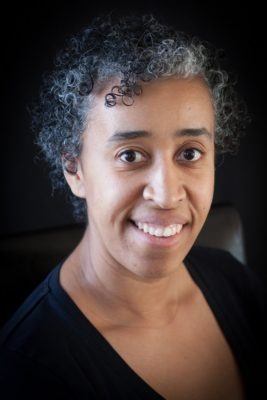
Black families returning to school are stuck between a rock and a hard place
Originally published October 14, 2020 in The Hamilton Spectator.
 School has started across Canada. Kids are learning online, in person or with a hybrid model. Parents chose one of these models based on physicians’ recommendations of risks of COVID-19 in school and their capacity to support learning at home. Did their racial identity play a role in those decisions?
School has started across Canada. Kids are learning online, in person or with a hybrid model. Parents chose one of these models based on physicians’ recommendations of risks of COVID-19 in school and their capacity to support learning at home. Did their racial identity play a role in those decisions?
Alongside COVID-19, the recorded killing of George Floyd, a Black man, resulted in global race-based social activism. Another Black life taken, directly by a police officer, indirectly by systemic anti-Black racism. There are many social media statements, news reports and TED talks about the intersectionality of systemic racism — how health care, education, economics and public policy all intersect at the critical point of race. But how does systemic racism affect the family deciding to send their Black child back to school?
Consider these scenarios of systemic racism:
- A Black family chooses online learning and joins a class with a white teacher. The white teacher sees something in the student’s house they are unfamiliar with and reports the family to Children’s Aid Society (CAS). After investigation it turns out to be a custom with Black families that the white teacher was unfamiliar with. Due to labelling from Blackness, a myriad of data shows that Black children’s behaviours are often misinterpreted. Unsurprisingly many Black families (never before involved with CAS) were reported to CAS during the Spring COVID-19 lockdown.
- A Black grade 10 student attends an overcrowded inner-city school with poor ventilation. Her classmates, needing to help with home finances, are working after school in high COVID-19 risk environments like essential services. Her friend catches COVID-19 at work, she catches it at school and most disturbingly she brings it home and her Grammy catches it. Black teenagers are more likely to go to overcrowded schools, work in essential services and live in multi-generational homes.
- A Black teenage boy is going to school on public transit wearing a mask. Are people going to be afraid of him, think he might be causing trouble or up to no good? Will COVID-19 increase that fear? Systemic anti-Black racism has trained people to fear and suspect Black bodies, such as crossing the street when a Black man is walking toward them.
Unfortunately, there are countless other real stories like these, showing the intersections between health care, education, economics and public policy — around the epicentre of race. As a developmental pediatrician, I’ve seen the data, as a Black mother I’ve heard the stories.
Black children face a higher risk of exposure to COVID-19 than white children. A newly heightened “racial awareness” and good intentions do not negate the harmful impact of systemic racism. They are also returning to families that are more likely to experience poorer health outcomes due to COVID-19. The fact is empirical data has shown in many Canadian cities that Black people are more likely to be hospitalized and die from COVID-19.
Choosing to keep Black children at home for school also presents more risks. If the parents are not able to provide an in-home education for their child — due to lack of resources, time or access, will their choice be policed differently from white parents? Public institutions (including academia and child welfare) were established on deep seated systemic racism, linked to slavery, so they need to acknowledge they don’t present the same options for Black parents. The fact is Black families are more often living in lower socioeconomic and unsafe or crowded housing situations and working in frontline essential services and, therefore, are more likely to be exposed to COVID.
Black parents face the challenges of COVID-19 with additional concerns. Due to systemic anti-Black racism many of these parents are not provided the same range of choices as white counterparts. This is due to the added scrutiny applied to their decisions. We need to be imaginative about how to create a broad range of solutions for families facing multiple adversities.
Consider these solutions:
- Direct more education dollars toward the higher needs schools (in lower income more diverse neighbourhoods) to ensure the health and safety of these children. In health care, we direct dollars toward various diseases and thus see improved outcomes (e.g. breast cancer). Why do we not do this in education also?
- Teach educators about the over policing of Black children’s behaviours. Monitor and correct the teacher’s behaviour if over policing continues.
The dilemma is, should we ask parents of Black children to decide between sending their child back to a riskier school environment or to risk being over policed and potentially under resourced at home … or should we do more?
